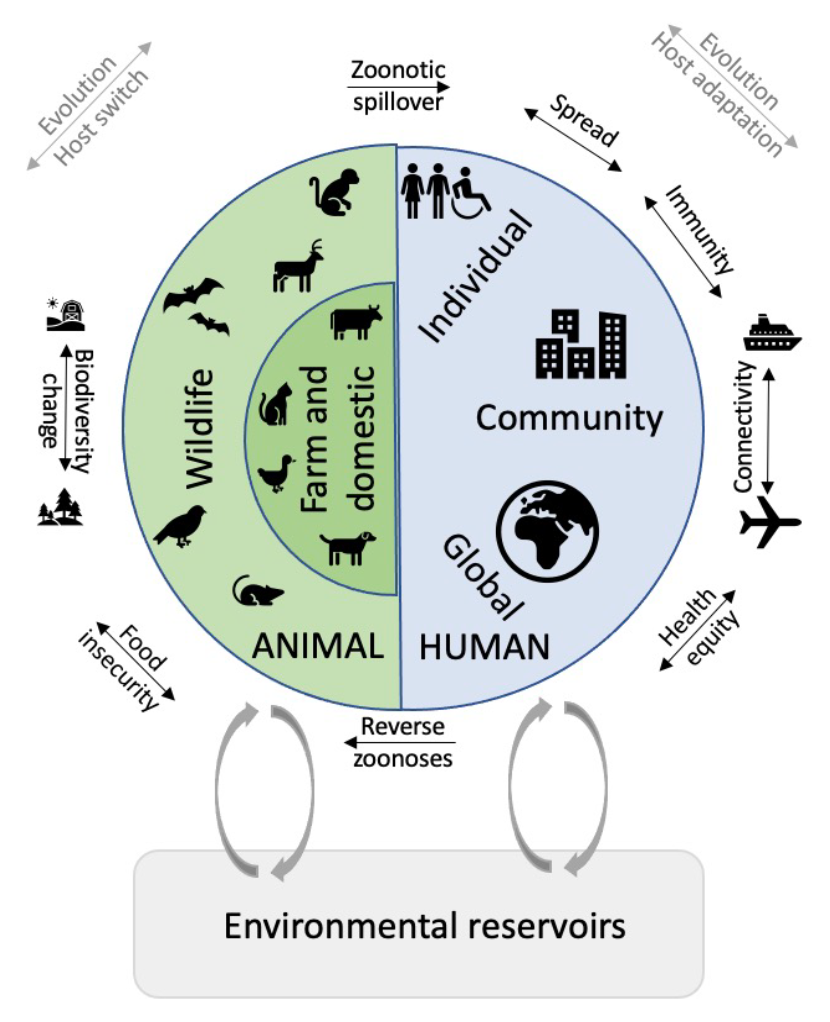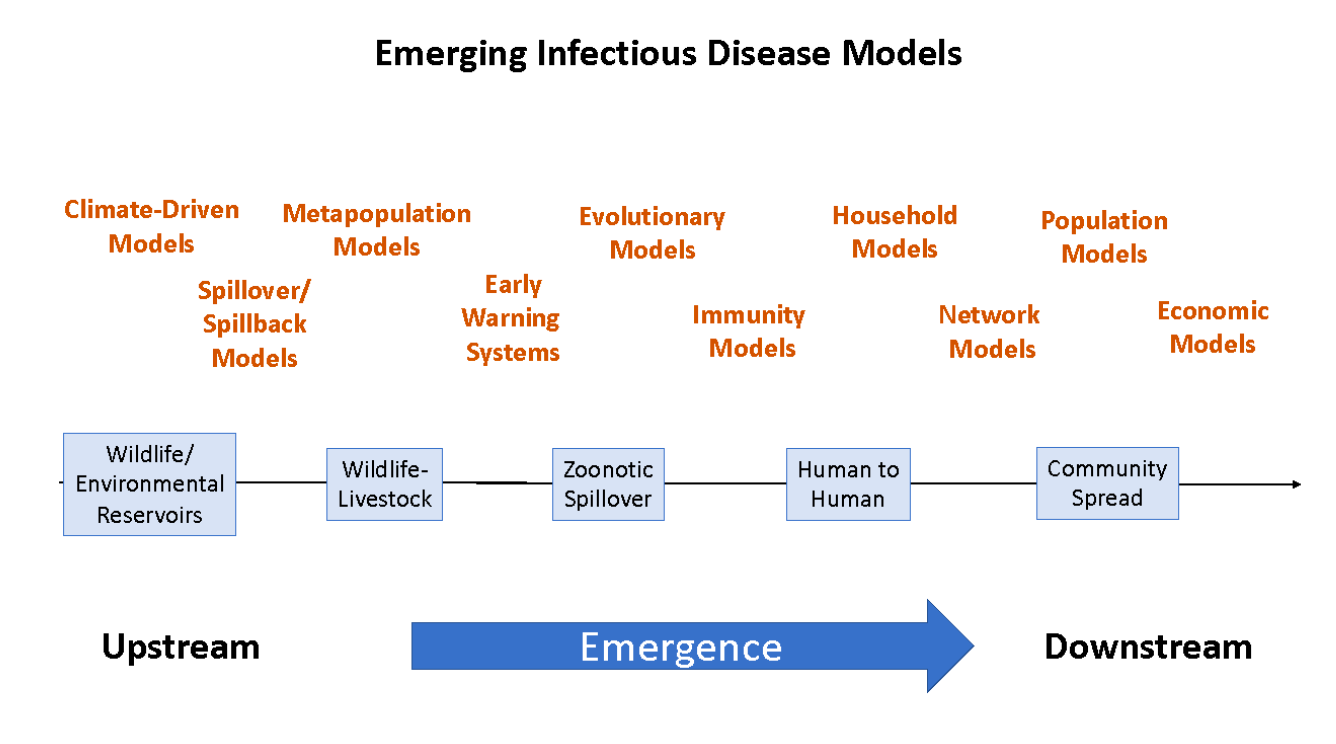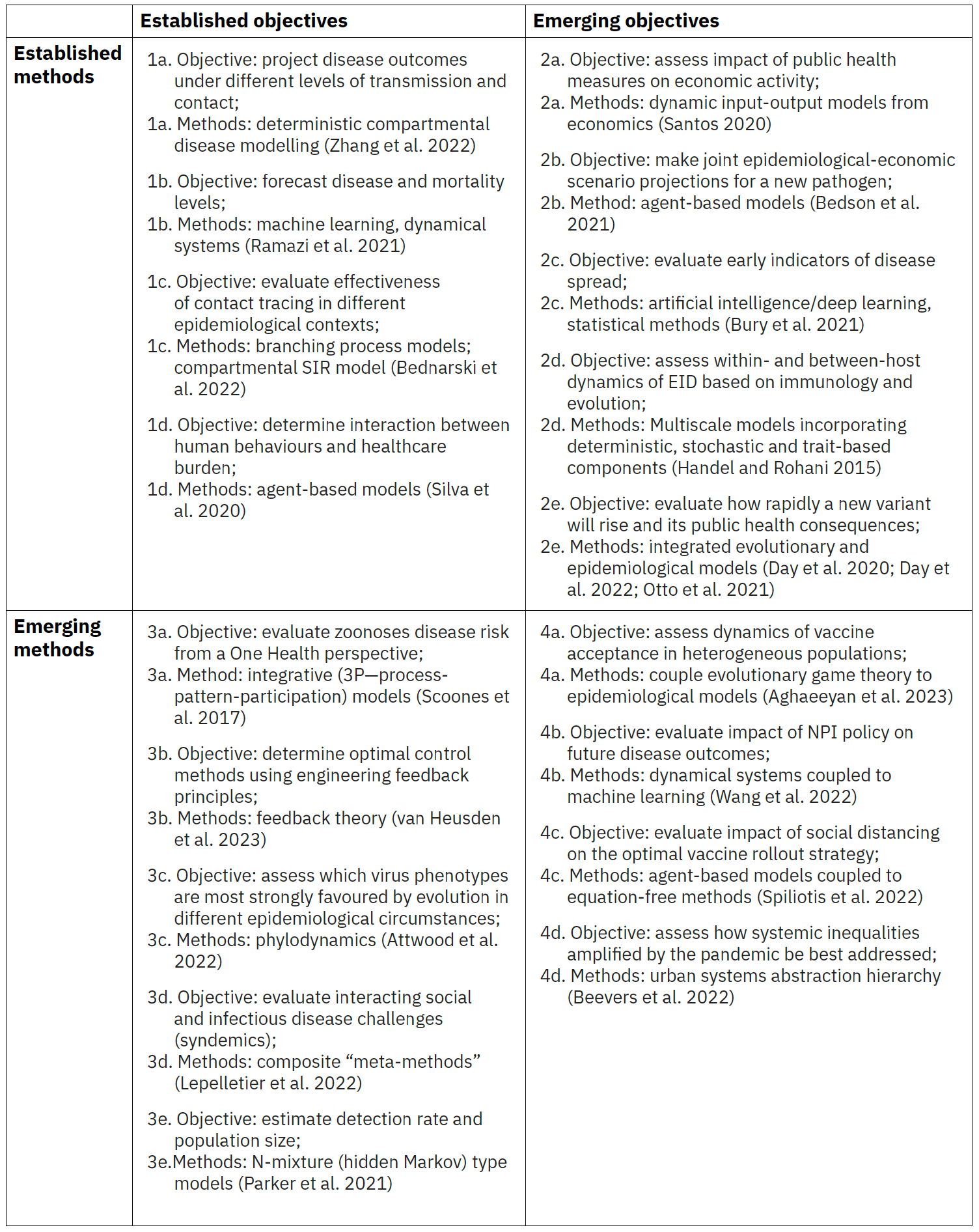
Figure 1. Emerging infectious disease models provide methods for assimilating multiple sources of information across multiple domains simultaneously.
At the human level, the activity should be shaped by social context and interventions (such as vaccinations, past infection, selection favouring immune escape and behaviour). Human society in turn shapes the infectious disease risks from wildlife, through our impact on the climate, ecology, increasing human density, and encroachment into areas where wildlife live (Figure 2). EIDM researchers in Canada have expertise in many of these aspects. This expertise must be mobilized in terms of research, training, and relationships.

Figure 2. Emerging infectious disease models from emergence to economics.
The existing EIDM networks have successfully demonstrated that a policy committee chaired by public health academic leaders and populated by provincial and federal public health officials is able to interact effectively with researchers in a bidirectional manner. This kind of structure will remain essential to facilitate effective interaction between researchers and public health.
The research activity of the future EIDM may be envisaged in a quadrant (Table 1):
- there are established objectives from public health (e.g., model projections of disease trajectories under a range of scenarios) that can be answered by researchers using established methods (e.g., compartmental infectious disease modelling with simple assumptions about the population structure and mixing)
- there are emerging objectives (e.g., determine the connection between public health measures and economic activity) that can also be answered through established methods, perhaps applied in a novel manner (e.g., dynamic input-output models from economics)
- there are more challenging established objectives (e.g., evaluate early indicators of disease spread) that require emerging methods (e.g., new advances in artificial intelligence/deep learning)
- finally, there are emerging objectives (e.g., assess methods for increasing vaccine acceptance in heterogeneous populations with differing decision-making dynamics) that will require significant research effort to address, likely using emerging methods (e.g., new ways of coupling evolutionary game theory to epidemiological models).
It is essential that EIDM activity should continue to embrace communication and knowledge translation. During the pandemic, researchers have recognized the need for communication across different scientific fields, institutions, and geographies. Within Canada, lessons have been learned in understanding the different dynamics in different parts of the country such as in Atlantic Canada and in Indigenous populations.
EIDM activity must also align itself and engage with the Calls to Action outlined in the 2015 Truth and Reconciliation Report (Truth and Reconciliation Commission of Canada 2015). Key elements will involve building partnerships with Indigenous communities, educating researchers about the principles of reconciliation, and training researchers on Indigenous knowledge, Indigenous health, and building research relationships with Indigenous communities.
A common experience of researchers during the pandemic was the difficulty of accessing data. The situation is complicated with privacy and ethics considerations affecting collection and sharing of data, including lengthy institutional delays on approvals. The resolution of these issues goes beyond science, and perhaps into the legislative or political arena. Ideally, if an umbrella agreement between relevant parties could be negotiated and implemented this would significantly alleviate the difficulty of data access. Moreover, computational resources necessary to support data analysis, simulation, and the generation of synthetic data, need to be negotiated.
To ensure Canada’s alignment with its international partners, it is necessary to have institutional level agreements for sharing of best practices and modelling efforts. These communication efforts will support the work of PHAC, as well as its provincial and regional counterparts, and affect knowledge translation within government.

Table 1. Established and emerging objectives and methods in public health modelling, with examples of contributions from the EIDM network. The table shows some representative objectives and methods but is by no means complete.